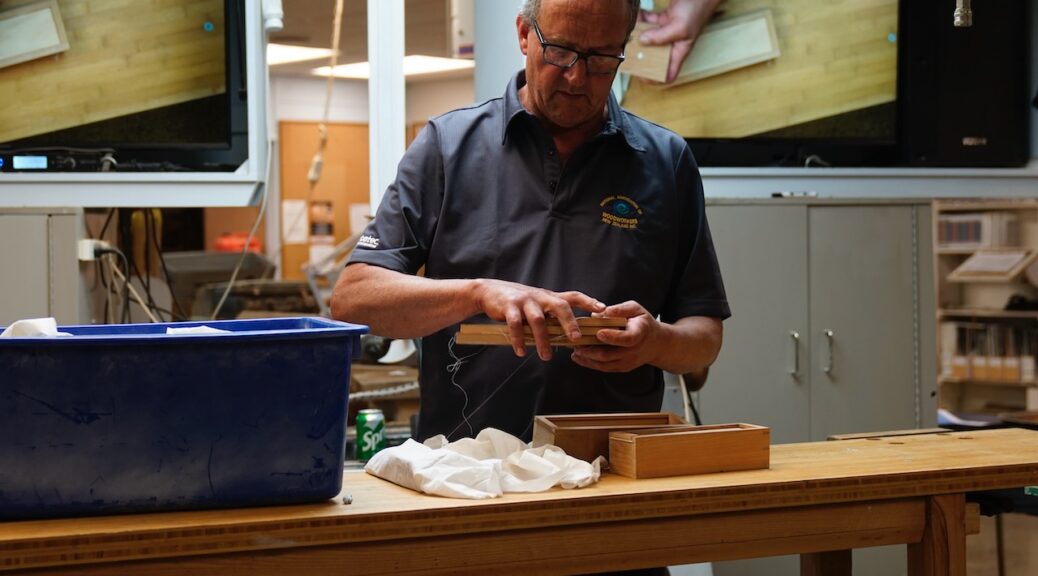Club Meeting: 18 October 2023
Report by: Kieran FitzGerald
Tonight the club welcomed Teles as a first time demonstrator. Teles’ life as a tradie includes antique furniture restoration and cabinet making, so with this background we pushed the lathe out of the way and erected Teles’ site workbench. Let the demo begin.
How many of us have picked up a roadside set of drawers or replaced an old piece of wooden furniture that has seen better days? These old treasures are a goldmine of beautiful old timber for the enterprising woodworker. Teles took the kauri sides of a set of drawers to demonstrate how to make a pencil box. Box making is the basis for so many wood working projects, and the dovetail joint is a time-honoured and integral part of much furniture and cabinetry.
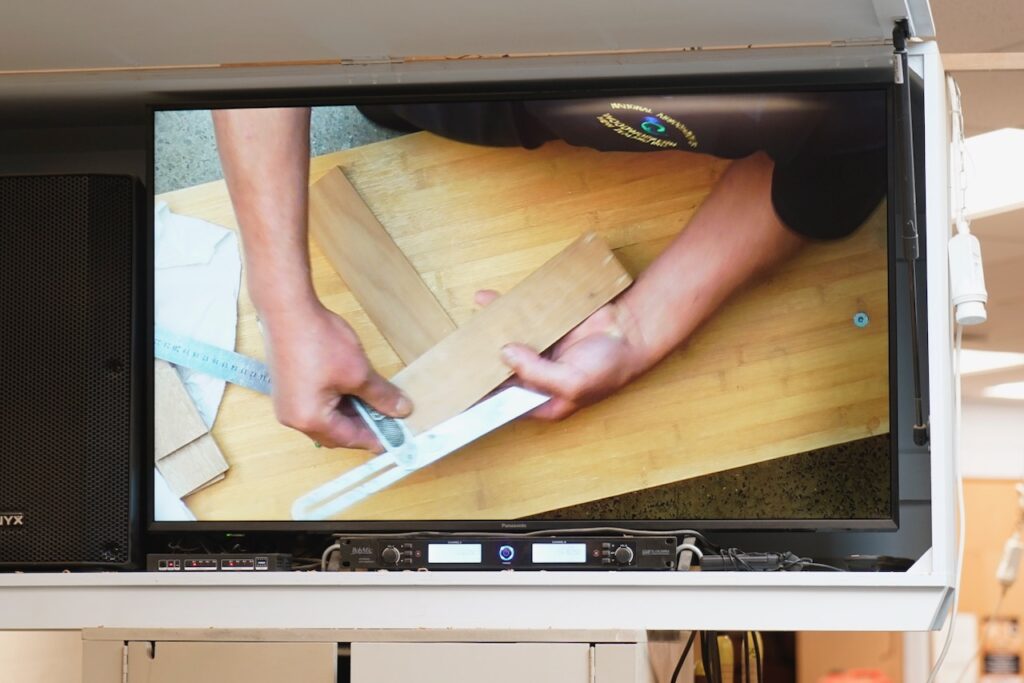
With pre-cut sides and ends, Teles started to show us the techniques for hand cutting dovetail joints. His aesthetic preference is for older style narrow pins. The standard ratios, and starting point for marking out the dovetails are 1:6 for soft wood and 1:8 for hard wood. Since Teles was using kauri he took an end piece and measured 1cm one way and 6cm the other way and drew the angle of the first dovetail. He then took his sliding bevel and set it to the same angle so he could mark out all the dovetails. Teles set a marking gauge to the thickness of the wood he was using, and scribed a line to denote the depth of the dovetails.
Teles had taken on board advice that there is learning to be had from doing a demo, and in this situation Teles had discovered this to be true. His learning was that he had to think about and plan for the rebate he would need to cut for the sliding lid of the pencil box before he raced in and cut his dovetails.
First step is to decide the number and spacing of the dovetails. Three is appropriate for this size box. With one of the end pieces, mark out the pins first, starting in the middle. Then Teles used a Japanese fine tooth dovetail saw to cut out for the pins, to the depth of his scribed line. The next step is to form the gaps between the pins. The pin sockets at each side can be easily cut off with the saw. The centre sockets need to be removed with a chisel.
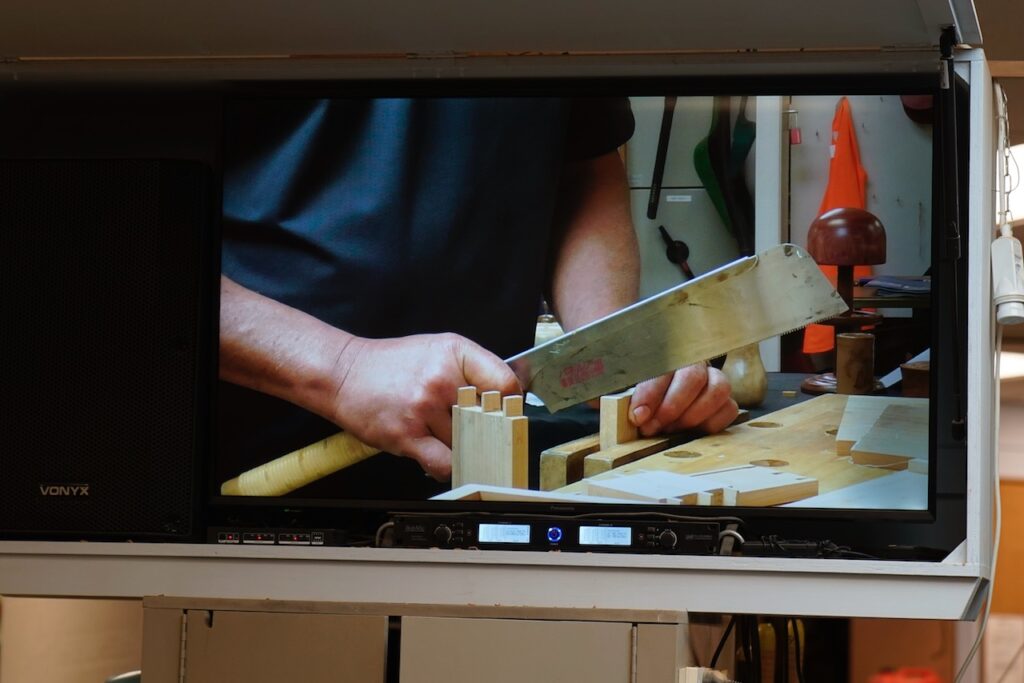
At this point Teles became somewhat animated, because he is a chisel aficianado. However he managed to restrain himself and limited his discussion to the types of most commonly used chisels, these being the firmer chisel, which has the bevelled sides, the mortising chisel, which has square sides and a slightly gruntier blade, and the paring chisel, which has a less bevelled cutting edge for paring end grain.
Teles used a firmer chisel to chisel out the gaps between the pins and tidy up the edges. Then, using the pins he had just cut he marked out the tails on one of the side pieces. These pieces were labelled to facilitate assembly later on. Cut out for the tails with the dovetail saw, and as with the pins, use a chisel to cut out the wood between the tails. Try a test fit, and adjust any of the cuts with a chisel or Stanley knife until a firm fit is achieved. The joint will hold tightly together without any glue, and can be disassembled if necessary.
Continue to cut the dovetails for each of the corners, scribe lines and, with a chisel, cut the rebate for the sliding lid, and assemble your box. Sure, the modern woodworker could have used a router and various jigs to do the same job, but there is nothing so satisfying as the beauty, sophistication and strength of a hand cut dovetail piece.
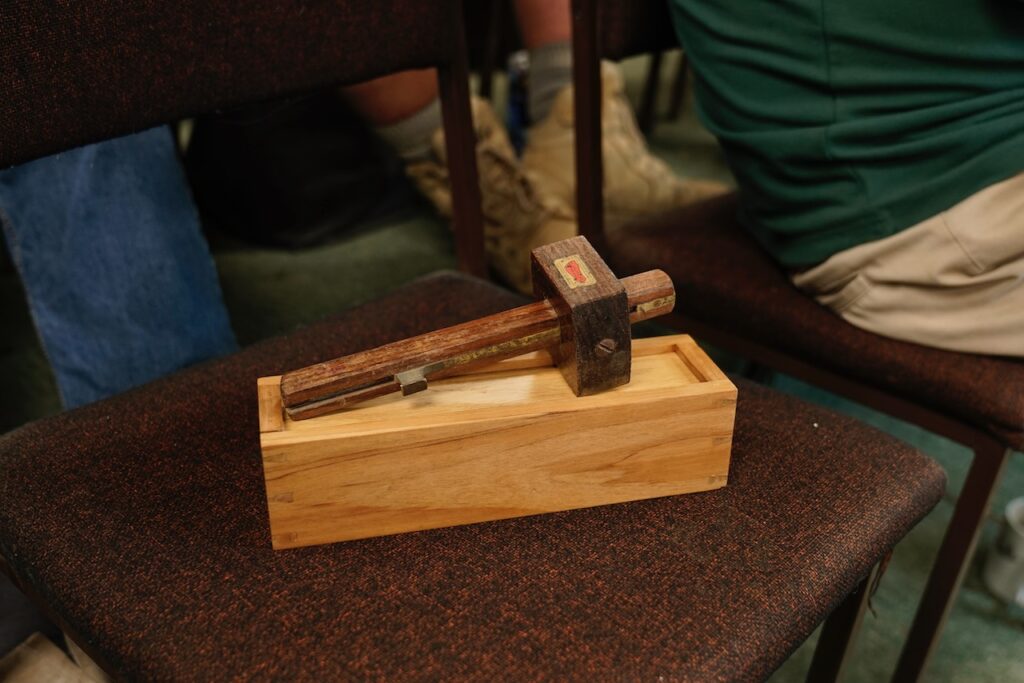
Teles rounded out his demo with a history and explanation about the vast array of hand planes which are used in wood working. As an avid collector of planes, Teles said that the quality of many of today’s planes cannot rival their older forebears. He described and showed to us some of the different planes, including:
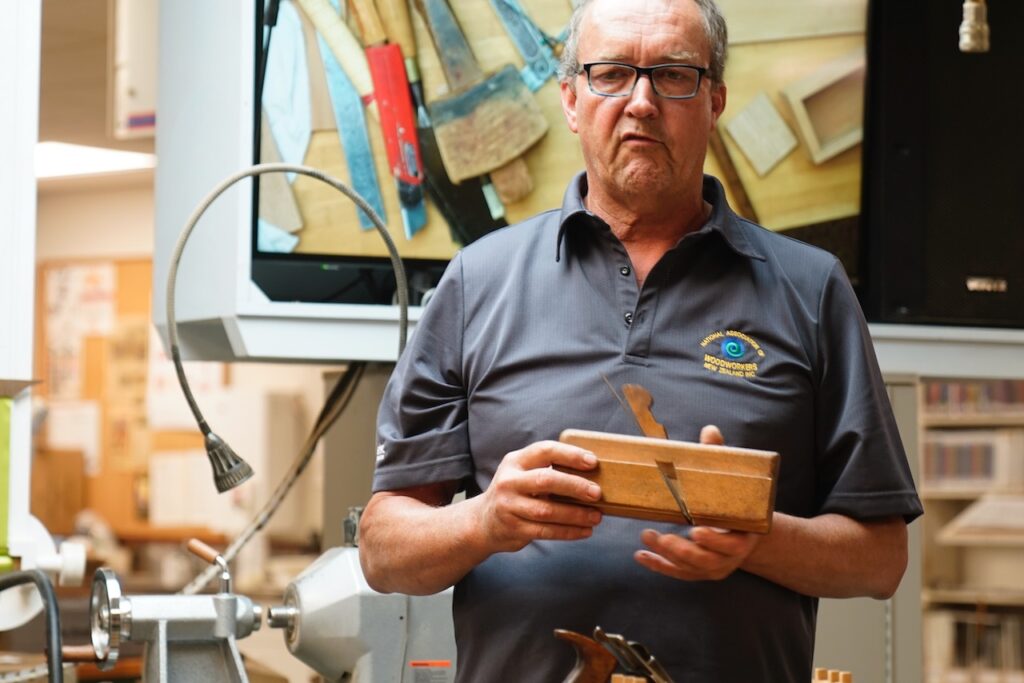
Stanley planes numbered 1 through 8. Stanley planes are regarded by some as the benchmark when it comes to the varying range of planes. The #5 would likely be the most common plane in use.
Moulding plane – a narrow wooden plane which came into commercial use in the 18th century with the industrial revolution – before that each woodworker made their own planes.
Compass plane – for shaping curves – Teles uses this for making templates to use with his router.
Rebate plane – self descriptive – the blade goes all the way to the edge.
Scraper plane – useful for removing finishes, eg varnish, off recycled wood.
Block plane – a small low-angled plane for touch up work etc.
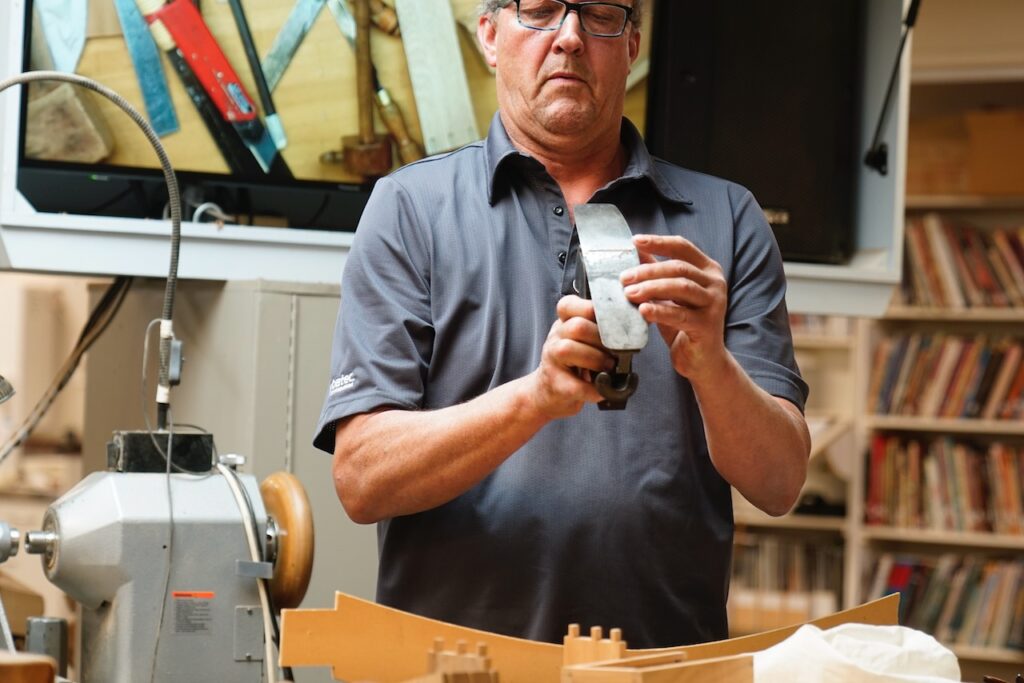
Tonight gave us a most interesting departure from our usual routine of making round stuff. Thank you Teles – your skill, knowledge and enthusiasm was totally infectious and may certainly motivate me to try dovetailing instead of the boring rebate and glue joints I have surrendered to in the past.
